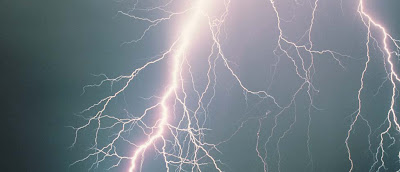
And it seems I have good cause to be worried. Thunderstorms are responsible for causing the majority of natural disasters: tornadoes, hurricanes, flash floods, micro- and macro-bursts, and forest fires caused by lightning.
Montessori Curriculum: Preparing for Weather Systems in the Classroom
When discussing severe thunderstorms with children, it’s important to also discuss safety. If you are inside:
- Stay away from windows or glass doors.
- Stay away from water – do not do dishes or take a bath or shower.
- Stay off of the phone.
- Stay away from tall things and metal objects.
- Make as little contact with the ground as possible. Go to a low spot and crouch on the balls of your feet, place your hands on your knees and lower your head.
- Remember that lightning can strike as long as you can still hear thunder. It does not need to be raining.
- Go to the lowest level of the building.
- Move into a bathroom or closet, away from windows and glass doors.
- Get under something sturdy and hold on or brace yourself with one hand.
- Cover your head and neck with your other hand to protect yourself from falling debris.
- Listen to the radio to know when the tornado has passed.
- Lie flat in a low spot so the wind and debris can blow over you.
- Protect your head and neck with your arms and hands.
When Children Are Afraid
Trying to convince children that there isn't any reason to be afraid will backfire. To them, their fears are not irrational. They truly are afraid! Instead, tell them you understand they are afraid or anxious and talk about ways to make the situation easier for them. NAMC's Physical Geography curriculum offers ways to explain and explore the physical phenomena that they are afraid of. Giving explanations and the chance to explore can make scary things seem more manageable. For younger children, try reading books that help explain. You may also wish to give them coloring pages or activity sheets like the resources offered by the National Severe Storms Laboratory.
If you are at school during severe weather, it is best to find ways to help distract the children. Sing favorite songs, read aloud, play quiet games. By redirecting their attention, children will be able to find comfort and control their emotions.
 NAMC’s Lower Elementary Physical Geography curriculum includes studying the Earth’s Atmosphere (including Weather, Air Pressure, Clouds, Wind, etc.), the Earth’s Hydrosphere, The Earth’s Lithosphere, as well as Maps and Mapping, and The Sun and Earth.
NAMC’s Lower Elementary Physical Geography curriculum includes studying the Earth’s Atmosphere (including Weather, Air Pressure, Clouds, Wind, etc.), the Earth’s Hydrosphere, The Earth’s Lithosphere, as well as Maps and Mapping, and The Sun and Earth.As much as possible, NAMC’s web blog reflects the Montessori curriculum as provided in its teacher training programs. We realize and respect that Montessori schools are unique and may vary their schedules and offerings in accordance with the needs of their individual communities. We hope that our readers will find our articles useful and inspiring as a contribution to the global Montessori community.
© North American Montessori Center - originally posted in its entirety at Montessori Teacher Training on Thursday, March 27, 2008.
© North American Montessori Center - originally posted in its entirety at Montessori Teacher Training on Thursday, March 27, 2008.

I live in Malaysia. After reading ur article, have to start reminding myself how fortunate it is to live in a country with so few or almost zero natural disasters.
ReplyDeleteRani, you are fortunate. However, you can get your students interested in discussing natural weather systems by discussing the earthquakes, floods, monsoons, typhoons, and tsunamis that occur throughout the rest of Asia.
ReplyDelete